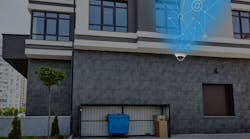WASHINGTON -- It's there when you ride an elevator and make a purchase in a store. There's no escaping it in a museum. Look up at the stoplight and a camera may be watching you. Being lens-shy just doesn't cut it in today's camera-crazed world. Chances are, during a good part of your day, there's a camera nudging into your private space.
There's no doubt surveillance cameras can aid police and protect property. Videos showing crimes are played routinely on news programs to help catch perpetrators.
But those same cameras can make people feel violated and uneasy. Their broad sweep makes no distinction between revelers at a parade and wrongdoers at a riot. And they never blink.
"I don't like to be watched," said K. Ann Largie, 29, of Laurel, Md. "It makes me feel uncomfortable."
Nikki Barnett, 31, of Burtonsville, Md., stopped showcasing her "happy dance" in elevators after learning many of them are monitored by cameras. "I stopped doing silly things," she says. "I don't want to portray myself in a certain light."
Closed-circuit cameras are spreading in cities, a trend hastened by concerns about terrorist attacks but by other reasons, too, including the mere availability of the technology.
"If I'm mugged at an ATM, I'm glad the bank has cameras so the person can be tracked down," said Justine Stevens, 32, of Arlington, Va. "But cameras in elevators monitoring behavior seems weird."
Indeed, for every videotaped image of a crime that leads to an arrest there are dozens of perfectly innocent moments captured.
"Cameras used for specific suspects and at specific times, that's good law enforcement," said Peter Swire, professor of law at Ohio State University. "But I don't want it part of my permanent record every time I scratch myself on a public street."
In Nashville, Tenn., a middle school installed cameras that parents, in a $4.2 million lawsuit, said captured their kids in various stages of locker-room undress. School officials say the cameras were put up in plain view to watch an outside door and hallway.
Perhaps nowhere are cameras more ubiquitous than in the nation's capital: federal buildings, museums, parks, traffic lights.
Some are discreetly placed in elevator ceilings and lamp posts. Others are more obvious, such as one fixed near an American flag adorning the Justice Department.
Some closed-circuit cameras run around-the-clock. Others come on for specific events. In Washington, 14 police cameras roll during parades, demonstrations and when the city goes on high alert. They are turned on a half-dozen or so times a year, and the police department publicizes it.
Kevin Morison, the department's spokesman, said there was a lot of hyperbole when the cameras were introduced. Critics claimed police were watching people leave home to go to work, then come home at night. "Frankly, we have no interest in doing that, or capacity to do that," he said.
That system is part of a larger one. At a police command center, feeds from those cameras are watched along with those from the city's subway system, transportation department and more.
Critics contend the camera lies or at least misleads. An innocent conversation can appear conspiratorial, depending on the angle, the lighting or many other factors.
But Paul Rosenzweig, senior legal research fellow at the conservative Heritage Foundation, said today's world demands that people be more open to the use of cameras.
"You can't sweep back the tide of technological development and you can't blink your eyes to necessity," he said. "We are in a changed circumstance today. For us, September 11 brings it home."
Chicago is working on plans to link more than 2,000 public surveillance cameras in a network that would use sophisticated software to alert authorities to potential crimes.
In Los Angeles, the police department recently deployed a remote camera surveillance system that is used to identify, track and record criminal activity in some parts of the city. The system is equipped with "intelligent" video capabilities and facial recognition software.
New Orleans is installing a sophisticated crime-fighting system of bulletproof cameras, each capable of eyeing an eight-block area. So far, about 240 of the proposed 1,000 cameras are in operation.
New Orleans officials say their system has plenty of safeguards against abuse. Cameras are not routinely monitored and video is stored for a brief period, to be watched if a crime is reported. Only a few officers have access to the video and they look at it only in response to a specific report, officials said.

